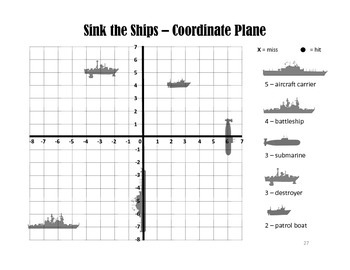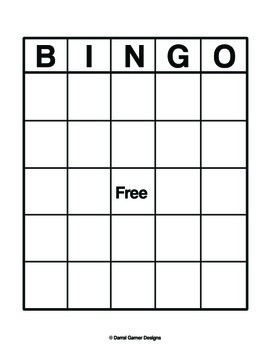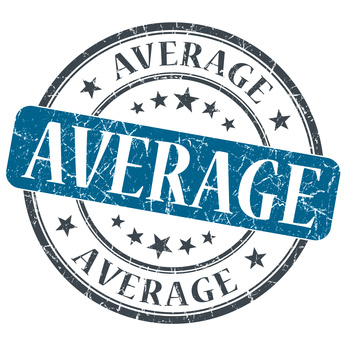Sunday, 31 May 2020
Percents Less Than 1 and Greater Than 100
An activity that is relevant to these times could be a project on the effects of COVID-19. Students can look at the effectiveness of different measures taken by governments and populations. They can research the population vs the number of people infected and the number of deaths. They can extend it to look at the number infected at different times. Students can easily extend it by going more in depth and looking at multiple factors. They will do a write up after they are done their calculations to show their understanding of what percentages mean.
Discrete Linear Relations
This activity is to get students to practice graphing points. Students will play battleship, based on this activity: https://www.teacherspayteachers.com/Product/Battleship-Activity-Common-Core-Graphing-on-a-Coordinate-Plane-887295
Pair students up and give them a blank cartesian plane. They will each plot their ships, and then guess where each others ships are using the coordinates. Make sure to cut out the ships for students ahead of time, or you can tell students how many squares each ship should be. Many students will be familiar with the game, so it could be fun to have them explain the rules and get one to scribe on the whiteboard.

Pair students up and give them a blank cartesian plane. They will each plot their ships, and then guess where each others ships are using the coordinates. Make sure to cut out the ships for students ahead of time, or you can tell students how many squares each ship should be. Many students will be familiar with the game, so it could be fun to have them explain the rules and get one to scribe on the whiteboard.

Operations With Fractions
This is a great hands on activity to reintroduce fractions and make sure students are starting off with a strong base: https://m.youtube.com/watch?v=PmWnMtLBJZM
This can easily be extended to operations with fractions by having students add together different fractions and see what they make. They can explore why you don’t add the denominator when you add fractions. They can explore why you find a common denominator, and why it needs to be a multiple and not a factor.

This can easily be extended to operations with fractions by having students add together different fractions and see what they make. They can explore why you don’t add the denominator when you add fractions. They can explore why you find a common denominator, and why it needs to be a multiple and not a factor.

Numerical Proportional Reasoning
This is a great activity to finish off the unit! It uses shark teeth compared to the size of their body to try to find the size of a megalodon. The post goes through a great way to plan the lesson: http://mrpiccmath.weebly.com/blog/3-acts-megalodon


Two-Step Equations and expressions
This activity is to review two-step equations and expressions. It's a very simple bingo game, I used it in my class and it worked really well. Students were really engaged the whole time. Give students a blank bingo card and get them to fill in the numbers from 1-24, with the middle being a free space. Then, I just used a number generator on google to pick the number for the answer. I made up an equation where the answer is that number, and wrote it up on the projector. You can also come up with equations beforehand, and draw them out of a hat, it just depends on your comfort level! I walked around when students were answering the question and picked someone who had the right answer to come up and write what they did. They had a lot of fun coming up and using my iPad to write the answer for everyone to see. You can prove the answer is correct to practice expressions as well!


Surface Area, Volume and Construction, Views and Nets of 3D Objects
This is a great activity to get students introduced to this topic! Since it’s using rectangles, which are a basic shape that students are familiar with, they should be able to figure it out without much guidance! This link gives a great description on how to run the lesson: http://mrpiccmath.weebly.com/blog/3-acts-pop-box-design
Pythagorean Theorem
Prove the Pythagorean theorem with origami! All you need is a piece of paper for each student. Use this video as a reference: https://m.youtube.com/watch?v=z6lL83wl31E

Central Tendency
To introduce averages, put a random number of the same object on each students desk (I suggest little candies). Explain that you can think of averages as sharing. Have each student count the number of candies on their desk and write the number on the board, and put all their candies in one big pile. You have to calculate the total number of candies, so add up all the totals. Then you have to figure out how many to give each person, so you divide by the total number of students. Distribute that number candies back to each student, and they each have the average number!


Square and Cube Roots
This activity is to visualize irrational vs rational numbers. When introducing students to the idea of irrational numbers, have students draw them out. They can use graph paper and space apart their numbers. For example, if they were drawing the square root of 2 which is 1.414213562373..., they would colour in the 1 square, and then they would count 4 and colour in that square, and then the square 1 away, and then the square 4 away, and then the square 2 away, and so on. Then do this with a repeating decimal as well. The repeating decimal will create a pattern, the irrational number will not. The picture attached is a representation of e. As you can see, there is no pattern and it looks very random. Drawing out a repeating decimal in the same way would make a pattern.

Theoretical Probability
https://burnabyschools.ca/indigenouseducation/wp-content/uploads/sites/4/2019/01/logic-games3.pdf
This is a really great lesson plan to introduce probability and games of chance. Choose a few games from this PDF, and have the kids play. A great thing to go along with this would be to create a sheet to record the probabilities of different games. After the students have had a chance to play most of the games, you can go over the probabilities as a class. The PDF goes through different assessment strategies, and even full unit plans. It’s truly an excellent resource!
This is a really great lesson plan to introduce probability and games of chance. Choose a few games from this PDF, and have the kids play. A great thing to go along with this would be to create a sheet to record the probabilities of different games. After the students have had a chance to play most of the games, you can go over the probabilities as a class. The PDF goes through different assessment strategies, and even full unit plans. It’s truly an excellent resource!
Financial Literacy
This project is for the financial literacy unit. Students find a recipe of something they would like to make. They will go online to different grocery store websites to find how to make the cheapest way to make it and have the least amount of ingredients left over. They can compare price per unit, and it will help them to budget
. 
Perfect Squares and Cubes
This activity is to introduce perfect squares and cubes. The idea behind it is to have students discover why these numbers are called perfect squares and cubes. The activity should be done in groups to encourage discussion. The idea behind the activity is to use squares to represent numbers. One would be represented with 1 square, 2 would be represented with 2 squares, and so on and so on. Numbers can be either lines, rectangles or squares. Prime numbers will be lines and perfect squares will be squares. All other numbers will be rectangles. Give each group a pile of 20 squares. Get them to make each number between 1 and 20 using squares, and write down if it's a line, square or rectangle. This can start a discussion on what perfect squares and cubes are, and how to find them. Attached is an example answer key with all the squares drawn out.
Thursday, 7 May 2020
Welcome!
The purpose of this blog is to provide resources to new math teachers in BC. As a practicum student, I've had a hard time finding meaningful activities that relate strongly to the BC math curriculum. Here, I will try to provide at least one activity per content area for each grade. I will start with the grade 8 math curriculum, and work my way up. The activities may be to kick off the unit, to introduce in the middle to extend to the next topic, or to wrap up the unit.
Subscribe to:
Comments (Atom)
Percents Less Than 1 and Greater Than 100
An activity that is relevant to these times could be a project on the effects of COVID-19. Students can look at the effectiveness of differe...
-
This activity is to introduce perfect squares and cubes. The idea behind it is to have students discover why these numbers are called perfec...
-
This activity is to visualize irrational vs rational numbers. When introducing students to the idea of irrational numbers, have students dra...
-
https://burnabyschools.ca/indigenouseducation/wp-content/uploads/sites/4/2019/01/logic-games3.pdf This is a really great lesson plan to in...

